Being immersed in the fitness industry provides me with a ton of different opportunities to experience different techniques, methodologies, and products. I recently had the privilege of a...
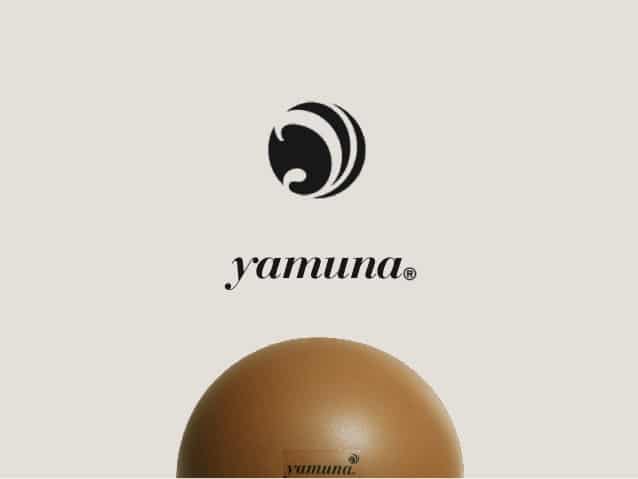

Being immersed in the fitness industry provides me with a ton of different opportunities to experience different techniques, methodologies, and products. I recently had the privilege of a...
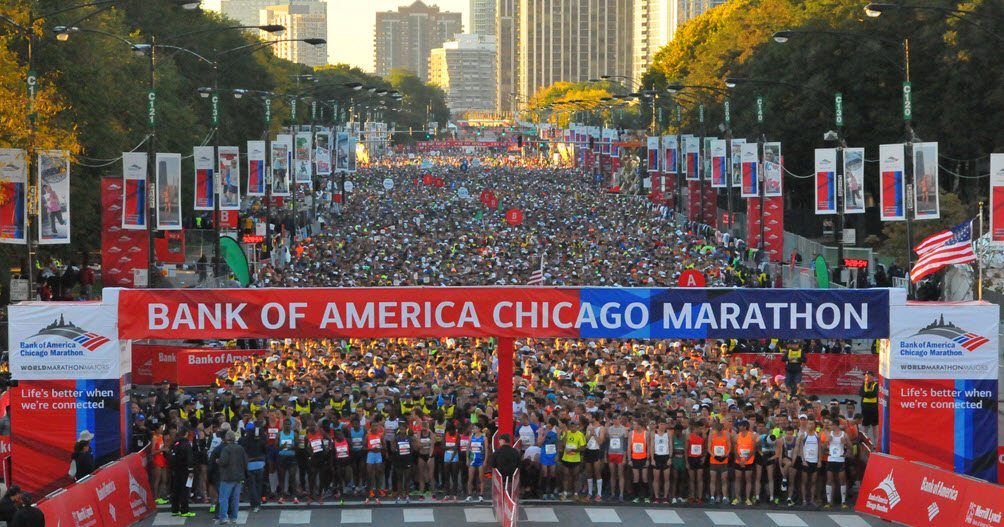
Leading up to the Chicago Marathon 2016 The Chicago Marathon provides an excellent course, plenty of support and, for me, a chance to visit home for a few days. It was no different for me this...

September 25 was going to be my day. The Ironman Augusta 70.3 triathlon was finally here. The race I had been training so hard for on one of my favorite courses. It was four-and-a-half months...

I have been an endurance coach for some time now. Once in a while, I receive an email from a client which chokes me up with pride. Today, I received one of those letters, so instead of sharing it...
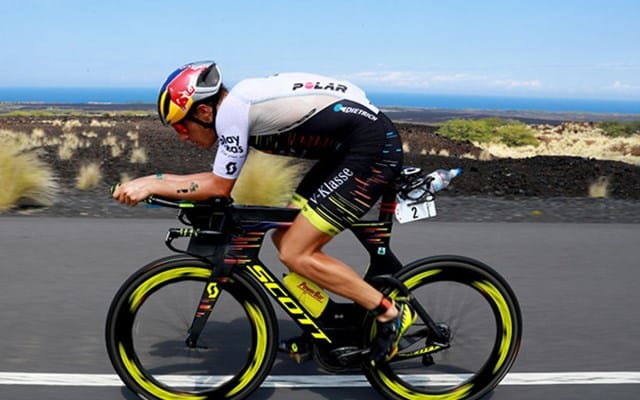
I found when looking for ways to get faster on the bike, is that there is so much information, from different coaches and experts, that it can be confusing and overwhelming. Personally, I...
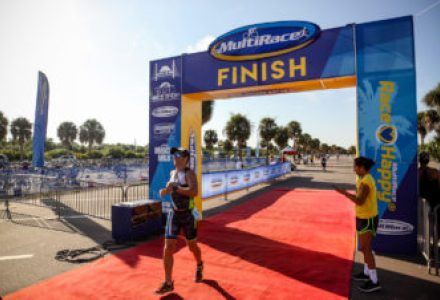
The previous post was a review of the FD3 Triathlon Series as if it was a product. Below you will find a more detailed account of my personal experiences during the race. Let me know in the...

It has been a while, and I have a ton of ideas that I am anxiously awaiting to share with you. Unfortunately, time has been getting away from me. Between training myself, a full-time job and being at capacity with 15 individual clients I am struggling for time to post. I promise I will figure out a way to make time. I am so lucky to have such great people to bounce ideas off of, that sometimes, by not posting, I feel like I am letting all of you down, so I promise to post more even if the posts end up being a lot shorter than usual. (Which the length is probably not your favorite part of it anyway. I know I ramble.)
Before I get into the nitty-gritty of my personal opinion of compression, a disclaimer.
I am not a medical professional. The opinions that are shared on this post come from research, my own experiences and the experiences of athletes I have personally witnessed and information I have researched. Every athlete/person has a different body and some products and/or methodologies may be advantageous for some and may even be dangerous for others. This post deals with my beliefs and my research. (Was that clear?)
Lately, most of the questions from other athletes, including clients of mine, have asked about compression. This usually centers around calf sleeves, but does include some of the other compression apparel as well. My answer is usually, for recovery and for temporary use they are great, but not for training. Why? Great question.
I am going to use calf sleeves as my example.

While running, biking, swimming or any major activity using the legs, the muscles are constantly in motion. That motion is what naturally makes the muscles stronger. The muscle moves and is loaded with either more repetitions, or with weight. The full range of motion of each muscle is imperative to the strengthening of the muscle. Compression holds that muscle in place and limits the movement therefore limiting the range of motion. While compressed the muscle cannot fully develop while training. Let’s take a look at the anatomy of the lower leg in the running position.


As you can see the gastrocnemius muscle and Achilles tendon, when the knee is flexed, both constrict and then elongate when the knee straightens. Here is the epitome of the range of motion naturally occurring when running. The more flexion and constriction that take place the more they are stretched causing the breakdown of the fibers. After the recovery period the fibers wrap tighter and in more abundance aiding in a strength and endurance. Now imagine that gastrocnemius muscle remaining constricted due to a calf sleeve. It seems to me that this would dictate that it would not have full range of motion also causing the Achilles tendon to remain stretched without the full ability to absorb the impact. This could unintentionally damage the Achilles tendon, the gastronemius muscle and the soleus muscle. If not damage, it will limit the ability to be strengthened. This is why I personally do not recommend calf sleeves during training workouts.
Recovery
I do however do not mind wearing compression while in recovery to include immediately following the cool down of a workout. I mentioned the healing of the fibers earlier. In order for the fibers to heal and become stronger after the breakdown, blood must be pumped through the muscle and with it water for hydration. Compression does help to isolate that area helping to keep the majority of the blood and water being pumped through the body to the point of the compression. With the legs either elevated or even walking around and at that point limiting the movement, it would allow for the blood to pool in that area helping to re-hydrate the muscle thereby helping to heal faster. In turn, an occasional training run or race, with compression at the tail end of an injury, might also benefit, but in a very limited quantity, and duration.
–IronGoof
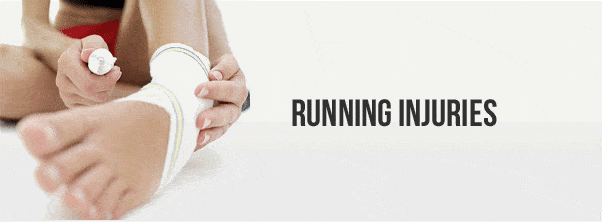
I believe I have started to write this post on injuries, a number of times, trying to be as clear as possible without seeming conceited or that the information I am giving is absolute. That being said I am giving this disclaimer:
The information in this post comes from experience, my personal research and conversations with Physical Therapists, Bio-mechanical experts, Orthopedists and other athletes. I am not a physician or medical expert, so please take this information as opinion based on cognitive research. Also, there is an exception to every rule and another explanation. I do welcome comments that give constructive criticism, but I make mention to this disclaimer first.
You might be surprised to hear that there are only two reasons runners (and other athletes) get injured; accidents and imbalance. Accidents are obvious right? For example; rolling the 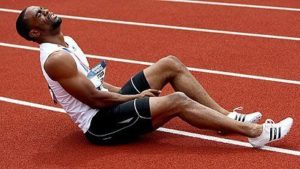 ankle stepping off a curb, falling, being hit by a bicycle, etc.
ankle stepping off a curb, falling, being hit by a bicycle, etc.
Imbalance will cover the why’s of the rest of the injuries. The human body is designed for every system to work in synergy, therefore when one piece of the puzzle is not operating a full capacity or efficiently, the other systems have to do more work. This is when the imbalance occurs.
When talking with Physical Therapists and Bio-mechanical experts I was shocked at some of the stories I heard. One story I heard was of a football player who was training, running 100s up and down the field carrying a ball. He had extended his shoulder just barely beyond its usual range of motion, and he ended up with severe pain in his opposite quadricep. “What?!!!!” was my initial reaction, however, I was then educated on the connective tissue (ligaments, tendons etc) which can be traced from the very top of our skull, down through our torso and into the extremities. Everything is connected.
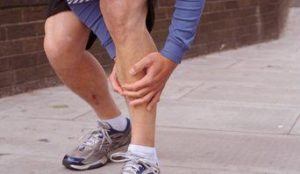
As another example, one of the most popular injuries for newer runners are the dreaded shin splints or medial tibial stress syndrome (MTSS).
Scientifically it is caused tiny micro tears of the fibers connecting the medial soleus fascia through the periosteum of the tibia where it inserts into the bone. Due to the soleus becoming so week that the constriction starts to bow the tibia. In more layman’s terms, the calf becomes so tight due to weakness and inflexibility, that the connective tissue pulls on the bone. (There is some physiological proof and complaints that more runners are getting shin splints and other injuries due to training in calf sleeves and other compression gear, but I will address this in another post.)
This same weakness, fatigue in the calf muscle can also cause another popular injury. Plantar Faciitis. In this case, instead of the connective tissue weakening through to the soleus is pulls on the plantar fascia causing inflammation which can be debilitating.
An injury can be traced either by the athlete themselves or by a professional to a point of imbalance. Most likely somewhere within the full spectrum of the athletes, body, behavior and, do I dear say it, attitude.
As a coach and trainer, my first rule, and one that I increasingly live by, is “Do no harm.” Therefore, I am always asking questions starting at a high level and continuing to get more specific. (The examples below are catered more toward running, but can be used in any sport.)
There are definitely more questions I ask, however, I think these examples give a good idea of why balance is so important.
The term “overuse” is being used quite a bit, but what is it? It’s an imbalance of planning or lacking thereof. Tracing Injuries is completed from the highest level which would be the training plan, all the way down to the balance of strength and flexibility within the connective tissue of the body. Personally, I think it is amazing that on one hand our bodies can endure a lot, but if we don’t notice those little weaknesses, it will create an imbalance that could cause and injury that may or may not keep us from doing what we love most.
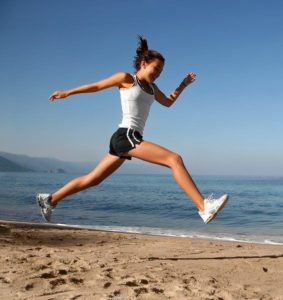
Balanced Plan -> Period -> Weeks -> Workouts -> Balanced Form -> Body -> Mind
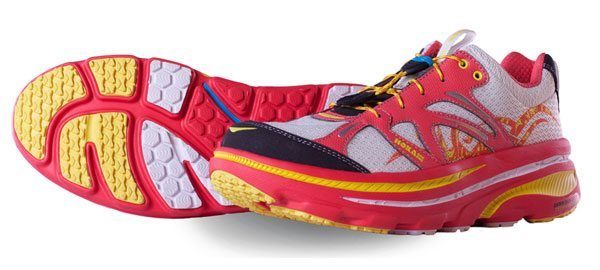
Hoka One One Biondi S2
Have you ever even heard of these shoes before? I didn’t before I met Chet “The Jet” whom was a double Ironman athlete I hosted in my home a few weeks ago. Chet is from Hawaii and he nonchalantly mentioned these shoes as he was telling the tale of his son whom was running across the country. He was even went on to mention that he sent a pair to a point in Alabama where he knew he son could pick them up, and the response, nothing but sure gratitude for the gift. That was the point I had to give them a try.
Hoka One One is not well known here on the east coast, but in the community of ultra runners they have been known since their inception in 2010. Obviously this is a relatively young company which falls under the Deckers Outdoor Corporation umbrella whom also houses brands like UGG, and Teva. With the increased popularity of Ultra and Marathon running, I believe these will take off to even higher levels in the very near future. Why? Well let me tell you.
When I looked at these shoes for the first time, I reacted negatively. The huge sole, was a 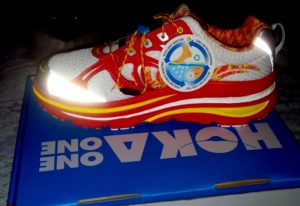 problem for me, due to my belief in a more of a minimal running form, but I for the readers and for my clients I wanted to give them a try, especially after the rave reviews from Chet and his son. I decided to take them out first for a three-mile run, and then give them a full test drive at the Sarasota Half-Marathon this past Sunday. I was completely overwhelmed at how comfortable and responsive these shoes are. At first glance they look really heavy don’t they? They weigh in at slightly under 10 ounces(9.8), which is the exact weight of my Brooks Pure Flow 2s that I love so much. My Brooks Pure Cadence 2s, I was just sent are actually almost 0.4 ounces heavier. (Just a disclaimer, I weighed these myself, I did not take these stats from the website.)
problem for me, due to my belief in a more of a minimal running form, but I for the readers and for my clients I wanted to give them a try, especially after the rave reviews from Chet and his son. I decided to take them out first for a three-mile run, and then give them a full test drive at the Sarasota Half-Marathon this past Sunday. I was completely overwhelmed at how comfortable and responsive these shoes are. At first glance they look really heavy don’t they? They weigh in at slightly under 10 ounces(9.8), which is the exact weight of my Brooks Pure Flow 2s that I love so much. My Brooks Pure Cadence 2s, I was just sent are actually almost 0.4 ounces heavier. (Just a disclaimer, I weighed these myself, I did not take these stats from the website.)
What also surprised me was the structure looks like a normal running shoe, like any Asics Nimbus, or Brooks Ghost which has a 12mm heel drop. They say looks can be deceiving, and with these shoes they are. They also have the same heel drop as the Brooks Pure Project line as well. The flexibility in the forefoot is probably the only disadvantage of this shoe versus my own running shoes and even that is minimal, and I believe probably after running in them for a little longer even that would become pliable enough to create more flexion.
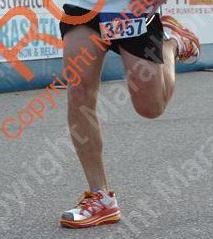 The sole not only provides superior cushioning upon impact, it also is slightly wider which increased the stability as well. It seriously was like running on a cloud. I always preach good running form, and if you have naturally good form, impact is not usually an issue due to a proper lean, raised knee, and high cadence. I found myself not having to think about my posture and position, because the rocker-ed sole of the shoe did not inhibit, but encouraged a good strike and lean. Just for the fact a few of my clients are still trying to get into the habit of good form, I decided to jump rope, and do some box jumps in order simulate the impact. I barely felt anything, and I had full control of my feet. i really thought I would end up kicking the rope especially doing double-unders, but I had complete control and I barely felt the impact doing the box jumps. I could totally understand why these shoes are so popular with the marathoners and ultra-runners on the other coast. The more people start wearing them here, I believe they will gain popularity pretty quickly.
The sole not only provides superior cushioning upon impact, it also is slightly wider which increased the stability as well. It seriously was like running on a cloud. I always preach good running form, and if you have naturally good form, impact is not usually an issue due to a proper lean, raised knee, and high cadence. I found myself not having to think about my posture and position, because the rocker-ed sole of the shoe did not inhibit, but encouraged a good strike and lean. Just for the fact a few of my clients are still trying to get into the habit of good form, I decided to jump rope, and do some box jumps in order simulate the impact. I barely felt anything, and I had full control of my feet. i really thought I would end up kicking the rope especially doing double-unders, but I had complete control and I barely felt the impact doing the box jumps. I could totally understand why these shoes are so popular with the marathoners and ultra-runners on the other coast. The more people start wearing them here, I believe they will gain popularity pretty quickly.
The retail price of the Hoka One One Biondi S2s are $170.00 which seems even high for a running shoe, but like the Newtons, they have a much higher mileage output. In my research I have found these shoes have been averaging over 700 miles without any degradation of the sole or cushioning. An ultra runner friend of mine said he had 3 pair of these he was switching out, and his current count is at 3048 miles and he has no intention of getting new ones yet. Most running shoes will get up to 350 miles, and my favorite Pure Project line rates there own shoes at 250 miles and cost around $100 retail.
They do take some getting used to. They do feel bigger, but not heavier. I do like that I was 5’11’ with them on, instead of 5’8″ and change. Personally, I do not think I would use them for a half marathon or below. I like the feel of the road a little too much, but you better believe I will be running the Chicago Marathon in them.
I give the Hoka One One Biondi Speed 2s, 4 out 5 Goofs.
Hoka One One has several other versions of shoes, for different fits, and surfaces. More information can be found on their web site.
 |
| PB&J before our ride this weekend |
Have you ever heard that saying “Today is first day of the rest of your life”? Today started my Ironman Journey #2 and I was excited last night to get started. No more excuses, no more waiting, today was the day the plan actually started. Of course I was so excited that I couldn’t sleep last night, but I got up anyway and got on my trainer for an hour of high intensity cycling in order to document my Lactate Threshold Heart Rate and Power Zone.
Today, I had to take two Lactate Threshold tests. The LT test determines at what heart rate and power wattage that you blood delivers oxygen to your muscles most efficiently. The scientific definition is the maximum steady state effort that can be maintained without lactate continually increasing. Lactate builds up not allowing oxygen to be utilized. Stay within the LT and the body will be able to keep working efficiently which turns into long amounts of time at that heart rate.
The greatest thing about knowing your Lactate Threshold is that you can train to make it even more efficient. A higher threshold means the body can keep going at higher intensity which turns into speed in the case of triathlon. The caveat is that in order to increase the LT, it has to be done slowly. More workouts above the LT will increase it, but the more the body and muscles are working above it, the shorter the duration until the muscles learn to work with less oxygen making them work a lot more efficiently. This is why the trends have been hit the gym hard, and the endurance will come.
I have a buddy Blayne, whom decided to make the move to CrossFit which is the epitome of high intensity training. I have done a couple of these workouts in the off-season and the actual work in class may only be 20 minutes, but the participants are wrecked afterwards. Let me get back to Blayne. He started taking part in CrossFit religiously, and trained very little for the Rev3 70.3 and completed it with no problem and did really well. The story doesn’t stop there. He entered a 50 mile road race a few weeks later without running more than 9 miles and he completed it and I saw him two days later as he was entering the coffee shop from another CrossFit class and he looked fine. (Maybe I should put the disclaimer that says “results not typical”?) Did I mention the guy is in his 40s?
More and more I have read about triathletes either taking up CrossFit, High Intensity Training(HIT), or supplementing their training with either. It makes sense. A couple of times a week, a short circuit sets of heavy weight(with good form) and the body works higher than it’s LT training the muscles to work with less oxygen. If the body continues to train this way, it makes sense the muscles adapt to utilizing a lower amount of oxygen. When the intensity is lowered, the heart rate reduces allowing more oxygenated blood to the muscles which actually increases the aerobic capacity or VO2. Increased VO2 allows the body to work harder at a longer rate.
Whew! Enough science. My first week looks like this: